Home> Bearing Technology> Fidget Spinner Bearings Guide: Navigating the World of Spinning Technology
Introduction
Overview of Fidget Spinner Bearings
Fidget spinner bearings are the critical components at the heart of fidget spinners, enabling their smooth and prolonged spinning action. These bearings are typically small, cylindrical devices that facilitate rotational movement with minimal friction. They consist of inner and outer rings, a series of balls or rollers, and a cage to keep the rolling elements evenly spaced. The design and material of these bearings significantly influence the spinner's performance, including its spin time, smoothness, and noise levels.
The significance of fidget spinner bearings lies in their ability to reduce friction and support the rotational motion of the spinner. High-quality bearings enhance the user experience by providing a longer, smoother, and quieter spin. Conversely, poor-quality bearings can lead to a rough, noisy, and short-lived spin, diminishing the appeal and functionality of the fidget spinner. Understanding the different types of bearings and their specific attributes is crucial for selecting the right one for optimal performance.
The purpose of this guide is to offer a comprehensive resource on fidget spinner bearings. By delving into various aspects such as types, materials, performance factors, maintenance, and troubleshooting, this guide aims to equip users with the knowledge needed to make informed decisions. Whether you are a casual user seeking to improve your fidget spinner's performance or a hobbyist looking to deepen your understanding, this guide will provide valuable insights.
In the world of fidget spinner bearings, making informed choices can greatly enhance the functionality and enjoyment of your spinner. This guide will help you navigate through the different options available, understand the importance of maintenance, and troubleshoot common issues. By the end of this guide, you will have a thorough understanding of how to select, maintain, and optimize your fidget spinner bearings for the best possible performance.
By covering the essential aspects of fidget spinner bearings, this guide will serve as a reliable reference for both beginners and experienced users. It will help you understand the intricacies of bearing selection and maintenance, ensuring that your fidget spinner operates at its peak potential. So, let's dive into the world of fidget spinner bearings and explore how to maximize the efficiency and enjoyment of your spinning experience.
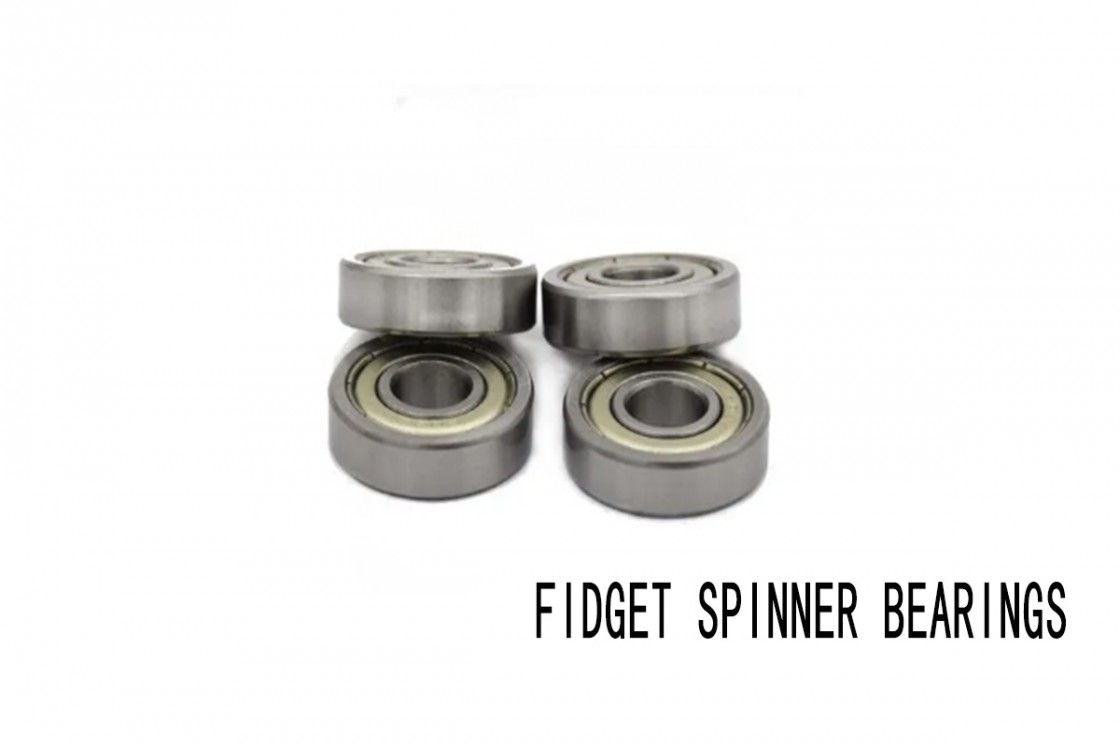
Understanding Fidget Spinner Bearings
Types of Bearings Used in Fidget Spinners
|
Type of Bearing |
Description |
Advantages |
Disadvantages |
|
Ball Bearings |
Consist of steel balls between inner and outer rings. |
Cost-effective Decent spin time Easy maintenance |
Limited performance compared to hybrid and ceramic bearings |
|
Hybrid Bearings |
Combine steel rings with ceramic balls. |
Longer spin time Reduced friction Smoother experience |
Higher cost compared to ball bearings |
|
Ceramic Bearings |
Made entirely of ceramic materials. |
Superior performance Longer spin times Reduced friction Greater resistance to wear/corrosion |
Higher price point compared to ball and hybrid bearings |
Key Specifications and Features
Bearing Size and Dimensions
The size and dimensions of fidget spinner bearings are crucial for compatibility and performance. The standard size for most fidget spinner bearings is 608, with dimensions of 8mm inner diameter, 22mm outer diameter, and 7mm width. This size fits the majority of spinner designs, ensuring a secure fit and optimal spin.
Material Composition
The material composition of fidget spinner bearings greatly impacts their performance and durability. Common materials include stainless steel and ceramics. Stainless steel bearings are durable and corrosion-resistant, suitable for general use. Ceramic bearings, while more expensive, offer reduced friction, lower noise, and longer spin times due to their smoother surface and lighter weight.
ABEC Ratings and Their Relevance to Fidget Spinners
The ABEC (Annular Bearing Engineers' Committee) rating system measures the precision and tolerance of bearings. Ratings range from ABEC 1 to ABEC 9, with higher numbers indicating greater precision. For fidget spinner bearings, higher ABEC ratings can contribute to smoother and longer spins. However, the practical difference between ABEC ratings in fidget spinners may not be as noticeable as in industrial applications. Factors such as material and lubrication often play a more significant role in performance.
By understanding these types of fidget spinner bearings and their key specifications, users can make more informed decisions when selecting the best bearings for their spinners. Whether prioritizing cost, performance, or durability, knowing the differences and features of each type helps in choosing the right bearing to enhance the fidget spinner experience.
Material Specifications and Design
Material Types
In the realm of fidget spinner bearings, various materials are employed to meet the diverse needs of users.
Steel Bearings: Steel bearings are the traditional choice for fidget spinners due to their affordability and reliability. Typically made from stainless steel, these bearings offer robustness and durability, making them suitable for everyday use. They provide satisfactory performance and are widely available in the market.
Hybrid Ceramic Bearings: Hybrid ceramic bearings combine the best of both steel and ceramic materials. These bearings feature ceramic balls within steel races, offering enhanced performance compared to traditional steel bearings. Hybrid bearings provide smoother spins, reduced friction, and increased longevity, making them a popular choice among enthusiasts seeking superior performance.
Full Ceramic Bearings: Full ceramic bearings represent the pinnacle of bearing technology in the fidget spinner domain. Constructed entirely from ceramic materials, such as silicon nitride or zirconia, these bearings offer exceptional performance characteristics. They are lightweight, corrosion-resistant, and capable of operating at high speeds with minimal friction. While full ceramic bearings come at a premium price, they deliver unparalleled performance and durability.
Design Features
Beyond material composition, the design of fidget spinner bearings plays a crucial role in determining their performance and durability.
Shielded vs. Open Bearings: Fidget spinner bearings are available in shielded and open configurations, each with its advantages. Shielded bearings feature protective shields or seals that help prevent dust and debris from entering the bearing, reducing the risk of contamination and extending bearing life. On the other hand, open bearings lack seals, providing less resistance to spin and potentially offering smoother performance. The choice between shielded and open bearings depends on the user's preference and intended application.
Importance of Cage Design: The cage, also known as the retainer, holds the bearing's rolling elements in place and maintains proper spacing between them. The design of the cage influences the bearing's performance and durability. A well-designed cage ensures smooth rotation of the balls or rollers, reduces friction, and prevents contact between rolling elements, thereby extending the bearing's lifespan. Different cage designs, such as crown, ribbon, or phenolic, offer varying levels of performance and suitability for different applications. It's essential to consider the cage design when selecting fidget spinner bearings to ensure optimal performance and longevity.
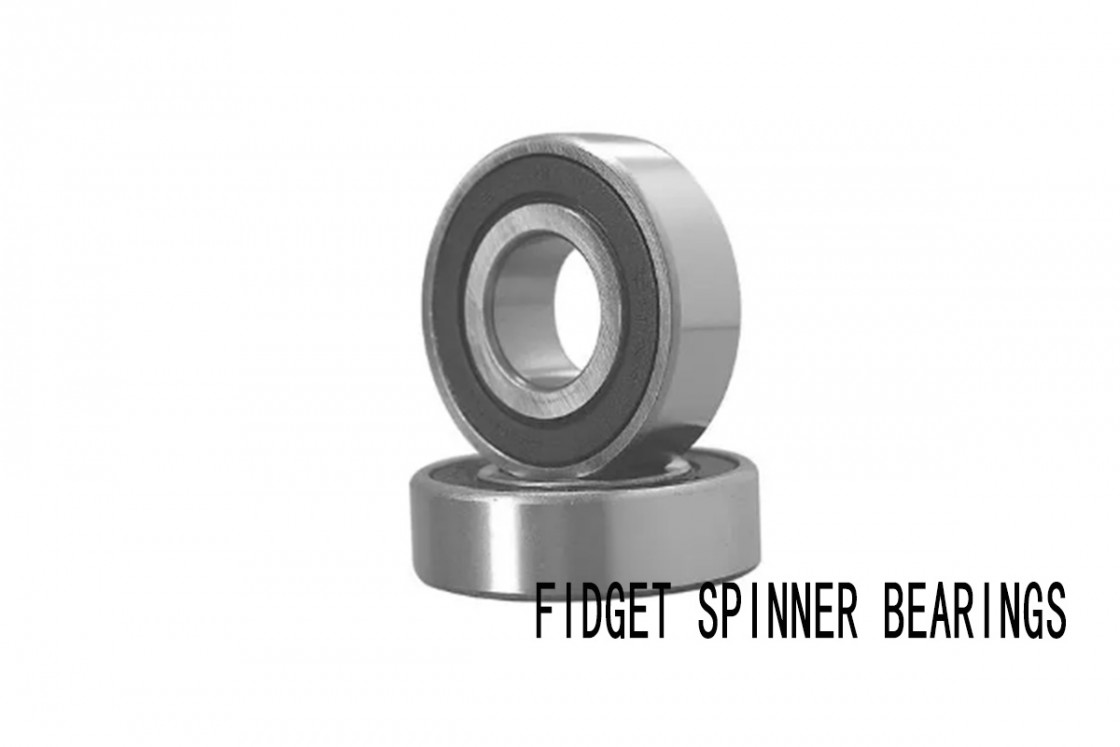
Bearing Performance and Maintenance
Performance Factors
When it comes to fidget spinner bearings, several key factors contribute to their overall performance and user experience.
Spin Time: Spin time refers to the duration a fidget spinner continues to rotate after being flicked. It's a crucial metric for enthusiasts who enjoy extended spinning sessions. High-quality bearings with low friction and excellent lubrication tend to exhibit longer spin times, providing users with a more satisfying experience.
Smoothness and Noise Levels: The smoothness of a fidget spinner's spin and the noise it produces are indicative of bearing quality. Premium bearings are designed to operate quietly and smoothly, without any noticeable friction or vibration. Smooth-spinning bearings offer a more enjoyable tactile experience, while reduced noise levels contribute to a quieter environment.
Durability and Lifespan: The durability and lifespan of fidget spinner bearings depend on various factors, including material quality, design, and maintenance. Bearings made from high-grade materials, such as ceramic or stainless steel, are more resistant to wear and corrosion, resulting in a longer lifespan. Proper maintenance, such as regular cleaning and lubrication, can also prolong the bearing's durability and ensure consistent performance over time.
Maintenance Tips
To maximize the performance and lifespan of your fidget spinner bearings, it's essential to follow proper maintenance practices.
Cleaning and Lubrication Methods: Regular cleaning is essential to remove dirt, dust, and debris that can accumulate within the bearing, causing friction and affecting performance. Use a mild solvent or cleaning solution to dissolve dirt, followed by thorough drying and lubrication with a suitable bearing oil or grease. Proper lubrication helps reduce friction, prolong bearing life, and maintain smooth operation.
Identifying and Addressing Common Issues: Keep an eye out for common issues that may arise with fidget spinner bearings, such as rust, dirt build-up, or decreased spin performance. Regular inspection can help identify these issues early, allowing for timely maintenance and repair. Addressing issues promptly can prevent further damage and ensure optimal bearing performance.
By paying attention to performance factors and following maintenance tips, you can ensure that your fidget spinner bearings deliver optimal performance and longevity, enhancing your spinning experience.
Installation and Replacement
Step-by-Step Installation Guide
Installing fidget spinner bearings correctly is crucial for ensuring optimal performance and longevity. Here's a step-by-step guide to help you navigate the installation process:
Gather Necessary Tools: Before you begin, gather the tools required for installation. These typically include a small screwdriver or bearing removal tool, a clean cloth or tissue for handling the bearings, and any lubricants or adhesives if needed.
Prepare the Bearing: If you're replacing old bearings or installing new ones, ensure they are clean and free from any debris or contaminants. Wipe them down with a clean cloth if necessary.
Remove Old Bearings (If Applicable): If you're replacing existing bearings, carefully remove them from the spinner using a suitable tool. Be gentle to avoid damaging the spinner or surrounding components.
Insert New Bearings: With the old bearings removed, insert the new bearings into the spinner's bearing slots. Ensure they are aligned correctly and seated securely to prevent wobbling or misalignment.
Apply Lubrication (Optional): Depending on your preference and the type of bearings used, you may choose to apply a small amount of lubricant to the bearings before installation. This can help reduce friction and improve spin performance. Be sure to use a lubricant specifically designed for bearings.
Test Spin: Once the bearings are installed, give the spinner a test spin to ensure everything is working correctly. Pay attention to any unusual sounds or vibrations, which may indicate improper installation or bearing damage.
Replacement Tips
Knowing when to replace fidget spinner bearings is essential for maintaining optimal performance. Here are some tips to help you identify when replacement is necessary:
Decreased Spin Performance: If you notice a significant decrease in spin time or smoothness, it may be time to replace the bearings. Over time, bearings can wear out or accumulate debris, leading to reduced performance.
Visible Damage: Inspect the bearings regularly for any signs of visible damage, such as rust, pitting, or deformation. Damaged bearings can cause issues with spin performance and should be replaced promptly.
Unusual Sounds or Vibrations: If you hear grinding, scraping, or other unusual sounds when spinning the fidget spinner, it could indicate bearing damage or wear. Similarly, excessive vibration during spinning may signal bearing issues.
Selecting Replacement Bearings: When selecting replacement bearings, consider factors such as size, material, and quality. Choose bearings that are compatible with your spinner's design and intended use for optimal performance.
By following these installation and replacement tips, you can ensure that your fidget spinner bearings are installed correctly and replaced as needed, allowing you to enjoy smooth spins and extended use of your spinner.
|
Brand |
Material |
Lifespan |
Rotation Speed |
Technological Features |
|
SpinMaster Bearings |
High-quality steel |
Long |
High-speed |
Innovative bearing design |
|
SwiftSpin Technologies |
Advanced materials |
Long |
Ultra-high-speed |
High precision machining |
|
PrecisionSpin Inc. |
High-wear resistance alloy |
Long |
High-speed |
Precision bearing fit |
|
TurboTwist Bearings |
Special lubricating materials |
Medium |
High-speed |
Efficient lubrication system |
|
UltraSpin Corporation |
Lightweight alloy |
Medium |
Medium-speed |
Lightweight design |
|
NovaTech Bearings |
High-strength plastic |
Medium |
Medium-speed |
High durability |
|
AeroGlide Bearings |
Advanced alloy |
Long |
High-speed |
Low friction design |
|
ProSpin Technologies |
Premium steel |
Long |
High-speed |
High-performance bearing seals |
Troubleshooting Common Issues
Identification of Problems
Fidget spinner bearings, like any mechanical component, can encounter issues that affect their performance. Here are some common problems to watch out for:
Overheating: Excessive friction or inadequate lubrication can cause bearings to overheat, leading to premature wear and reduced spin performance. Overheating may manifest as excessive heat radiating from the bearings or a noticeable increase in resistance during spinning.
Vibration: Vibrations during spinning can indicate misalignment, bearing damage, or other mechanical issues. Excessive vibration may cause discomfort during use and can lead to further damage if left unaddressed.
Unusual Noises: Grinding, scraping, or clicking noises when spinning the fidget spinner may indicate bearing damage, debris accumulation, or improper installation. These noises can detract from the spinner's smooth operation and may signal the need for maintenance.
Troubleshooting Techniques
When troubleshooting issues with fidget spinner bearings, it's essential to diagnose the underlying cause accurately and implement corrective actions effectively. Here's how to address common problems:
Diagnosing the Cause: Start by carefully examining the spinner and bearings to identify the source of the issue. Check for visible damage, debris buildup, or signs of wear that may be affecting performance. If necessary, disassemble the spinner to inspect the bearings more closely.
Implementing Corrective Actions: Once you've identified the problem, take appropriate steps to address it. For example:
Overheating: Ensure that the bearings are properly lubricated and clean. Use a high-quality lubricant designed for bearings to reduce friction and heat generation. If the issue persists, consider using bearings with higher heat tolerance or improving ventilation around the spinner.
Vibration: Check for misaligned bearings or loose components that may be causing vibrations. Tighten any loose screws or bolts and realign the bearings if necessary. If vibrations persist, replace damaged or worn bearings to restore smooth operation.
Unusual Noises: Clean the bearings thoroughly to remove any debris or contaminants that may be causing the noises. Inspect the bearings for signs of damage and replace any worn or damaged components. Properly reinstall the bearings, ensuring they are seated securely and aligned correctly.
By following these troubleshooting techniques, you can address common issues with fidget spinner bearings effectively, restoring optimal performance and prolonging the lifespan of your spinner.
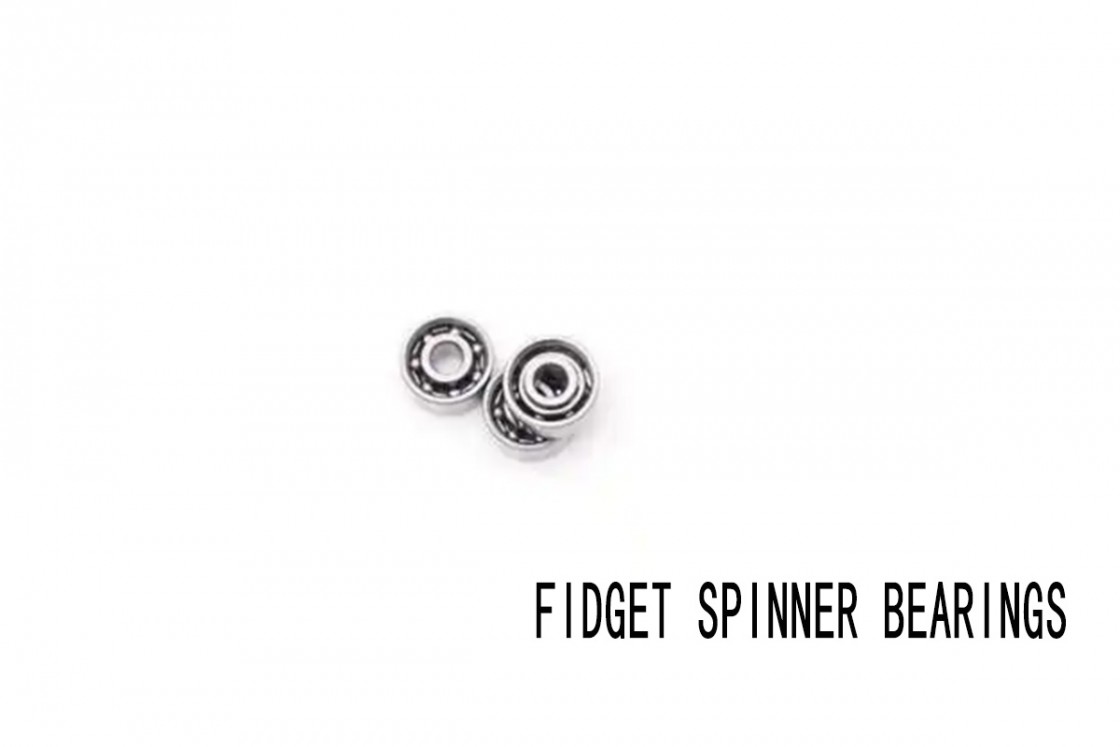
Innovations and Future Trends
Recent Innovations in Fidget Spinner Bearings
In recent years, the field of fidget spinner bearings has witnessed remarkable advancements driven by innovative research and development efforts. Here are some notable innovations that have emerged:
Advances in Material Technology: Manufacturers are exploring new materials and alloys to improve the performance and durability of fidget spinner bearings. Hybrid ceramic bearings, for example, combine the strength of steel with the lightweight and corrosion-resistant properties of ceramics, resulting in bearings that offer superior spin times and reduced friction.
Improvements in Bearing Design: Designers are continually refining the structure and geometry of fidget spinner bearings to optimize their performance. This includes enhancements such as precision machining techniques, micro-textured surfaces to reduce friction, and innovative cage designs that promote smoother rotation and quieter operation.
Future Trends
Looking ahead, several exciting trends are shaping the future of fidget spinner bearings:
|
Emerging Technologies |
The integration of smart technologies, such as sensors and wireless connectivity, into fidget spinner bearings is a promising area of development. These "smart" bearings can provide real-time data on spin performance, temperature, and other parameters, allowing users to track and analyze their spinning habits. |
|
Customization and Personalization |
As the popularity of fidget spinners continues to grow, there is increasing demand for customizable bearing options. Manufacturers are exploring ways to offer personalized bearings tailored to individual preferences, including custom colors, designs, and performance characteristics. |
|
Environmental Sustainability |
With growing awareness of environmental issues, there is a push towards developing eco-friendly bearing materials and manufacturing processes. Biodegradable bearing lubricants, recycled materials, and energy-efficient production methods are some of the sustainability initiatives gaining traction in the industry. |
|
Integration with Augmented Reality (AR) and Virtual Reality (VR) |
As AR and VR technologies become more prevalent, there is potential to incorporate immersive gaming experiences into fidget spinner bearings. Bearings equipped with AR/VR features could enhance user engagement and offer new ways to interact with digital content while spinning. |
By staying at the forefront of these innovations and trends, the fidget spinner bearings industry is poised for continued growth and evolution, offering exciting possibilities for enthusiasts and manufacturers alike.
Conclusion
Recap of Key Points
In this comprehensive Fidget Spinner Bearings Guide, we have explored various facets of fidget spinner bearings to help users navigate the intricacies of this spinning technology. Starting with the overview of fidget spinner bearings, we delved into their definition and significance, highlighting their crucial role in the functionality and performance of fidget spinners.
We then moved on to the types of bearings used in fidget spinners, discussing ball bearings, hybrid bearings, and ceramic bearings. Each type was examined for its unique properties and suitability for different performance needs. The section on key specifications and features provided insight into the importance of bearing size, material composition, and ABEC ratings, emphasizing how these factors influence the overall performance of fidget spinners.
In addition, we covered the installation and maintenance of fidget spinner bearings, offering practical tips for proper installation and routine maintenance to ensure longevity and optimal performance. The guide also included a section on troubleshooting common issues, providing solutions for problems such as noise, reduced spin time, and bearing wear.
Final Thoughts
Leveraging the information in this guide will empower users to make informed decisions regarding the selection and maintenance of fidget spinner bearings. By understanding the different types of bearings, their specifications, and proper maintenance techniques, users can significantly enhance the performance and lifespan of their fidget spinners.
Staying updated with the latest advancements in fidget spinner bearings is also crucial. As technology evolves, new materials and designs may offer even better performance and durability. Regularly checking for updates and innovations in the bearing industry can help users keep their fidget spinners at peak performance.
In conclusion, this guide serves as a valuable resource for anyone looking to optimize their fidget spinner experience. Whether you are a casual user or an enthusiast, understanding the nuances of fidget spinner bearings will help you achieve smoother spins, longer spin times, and overall better performance.
FAQs: Common Questions About Fidget Spinner Bearings
What are fidget spinner bearings, and how do they work?
Fidget spinner bearings are essential components that allow the spinner to rotate smoothly and efficiently. They typically consist of inner and outer rings with a set of balls or rollers between them. When the spinner is flicked or spun, the bearings reduce friction and enable the spinner to rotate for an extended period.
What types of bearings are used in fidget spinners?
There are several types of bearings used in fidget spinners, including ball bearings, hybrid bearings, and ceramic bearings. Each type offers unique characteristics and performance attributes, catering to different user preferences.
How do I choose the right bearings for my fidget spinner?
When selecting bearings for your fidget spinner, consider factors such as material composition, size, and ABEC ratings. Determine your priorities, whether it's spin time, smoothness, or durability, and choose bearings that align with your preferences.
What maintenance is required for fidget spinner bearings?
Maintaining fidget spinner bearings is essential to ensure optimal performance and longevity. Regular cleaning and lubrication are recommended to remove dirt and debris and prevent friction buildup. Additionally, inspecting bearings for signs of wear and tear and replacing them as needed can help maintain spinner functionality.
How can I troubleshoot common issues with fidget spinner bearings?
Common issues with fidget spinner bearings include overheating, vibration, and unusual noises during rotation. To troubleshoot these issues, diagnose the root cause, which could be improper installation, dirt accumulation, or bearing damage. Implement corrective actions such as proper cleaning, lubrication, or bearing replacement to restore performance.
What are the recent innovations and future trends in fidget spinner bearings?
Recent innovations in fidget spinner bearings include advancements in material technology and bearing design, leading to improved performance and durability. Future trends may involve the integration of emerging technologies and novel designs to further enhance spinner functionality and user experience.
These FAQs provide valuable insights into the world of fidget spinner bearings, addressing common questions and concerns that users may encounter. By understanding the fundamentals of bearings and their maintenance, users can optimize the performance and longevity of their fidget spinners.
Evans, G., & Allen, H. (2019). Trends in fidget spinner bearing technology: A comparative study of market leaders.
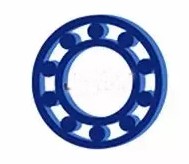

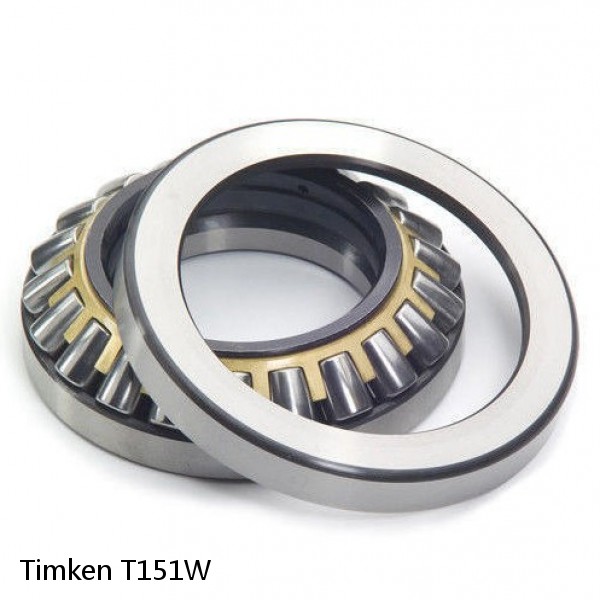 T151W Timken Thrust Roller Bearings
T151W Timken Thrust Roller Bearings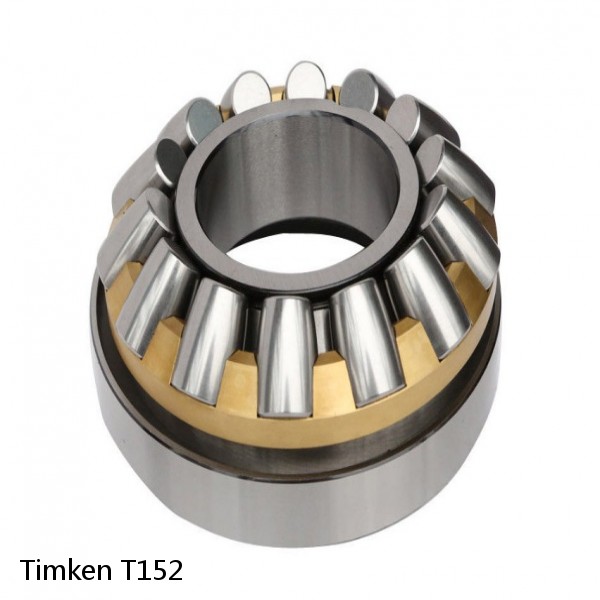 T152 Timken Thrust Roller Bearings
T152 Timken Thrust Roller Bearings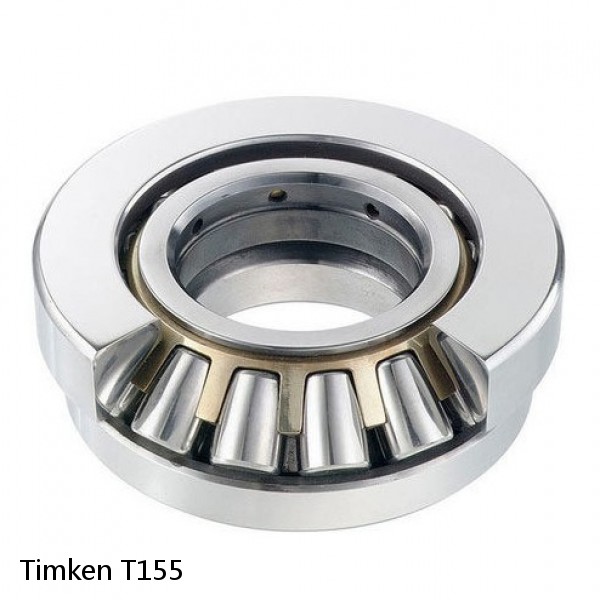 T155 Timken Thrust Roller Bearings
T155 Timken Thrust Roller Bearings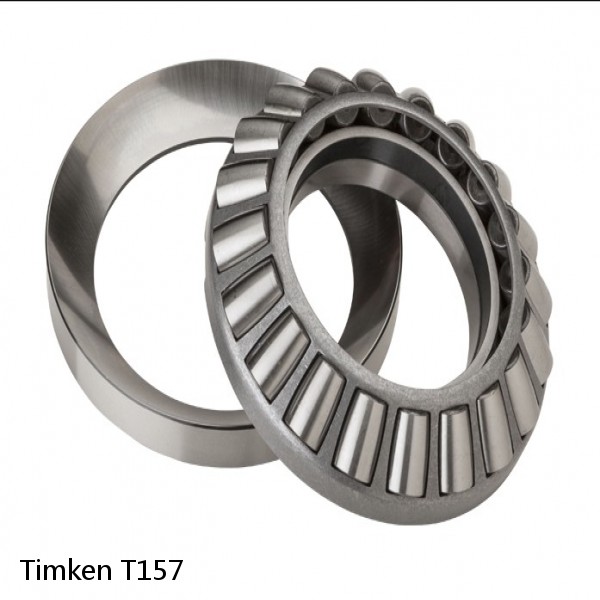 T157 Timken Thrust Roller Bearings
T157 Timken Thrust Roller Bearings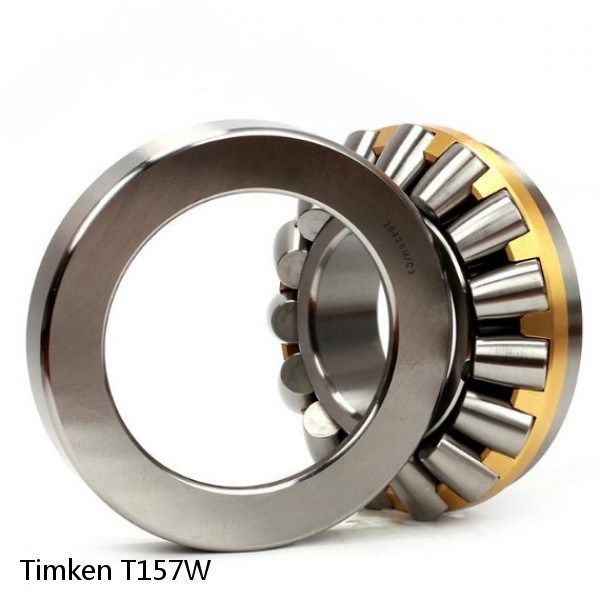 T157W Timken Thrust Roller Bearings
T157W Timken Thrust Roller Bearings